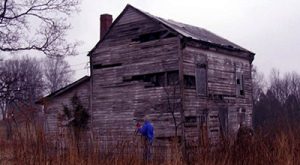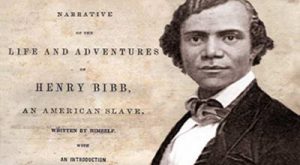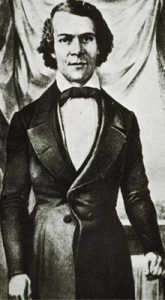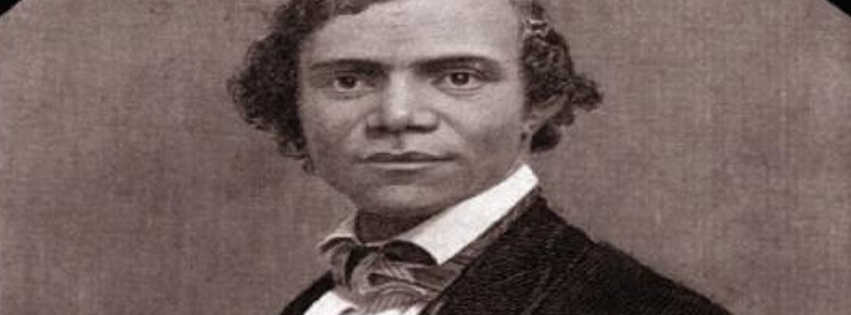The Henry Bibb Project
The Oldham County History center was awarded a $5,000 grant from the Kentucky Heritage Council in 2005 to conduct a feasibility study that investigates the various options for developing an education program to honor Kentuckian Henry Bibb (1815-1854). Henry Bibb was a prominent abolitionist who endured and overcame slavery to become the first black editor of a newspaper in Canada.
 On July 16, 2016, The National Park Service National Underground Railroad Network to Freedom included the Bibb Escapes/Gatewood Plantation as a site on the program. This is the site where the Oldham County Historical Society has conducted archaeology investigations since 2005. This was a final escape for Henry Bibb from Kentucky, before he, his wife and daughter, were sent to the Louisville slave jails and then further shipped to the New Orleans Slave market.
On July 16, 2016, The National Park Service National Underground Railroad Network to Freedom included the Bibb Escapes/Gatewood Plantation as a site on the program. This is the site where the Oldham County Historical Society has conducted archaeology investigations since 2005. This was a final escape for Henry Bibb from Kentucky, before he, his wife and daughter, were sent to the Louisville slave jails and then further shipped to the New Orleans Slave market.
 Since 2005 the Oldham County History Center has conducted four public digs and an annual Archaeological Institute for High School Students on the Gatewood Plantation site. Over 400 people have participated in the archaeology investigations at the Gatewood site under the sponsorship of the Oldham County History Center on this private property. William H. Gatewood owned Henry Bibb, his wife and daughter and eventually sold the family to slave trader William Garrison who then sent them to the slave markets in New Orleans. Jeannine Kreinbrink has been the lead archaeologist that oversees these investigations.
Since 2005 the Oldham County History Center has conducted four public digs and an annual Archaeological Institute for High School Students on the Gatewood Plantation site. Over 400 people have participated in the archaeology investigations at the Gatewood site under the sponsorship of the Oldham County History Center on this private property. William H. Gatewood owned Henry Bibb, his wife and daughter and eventually sold the family to slave trader William Garrison who then sent them to the slave markets in New Orleans. Jeannine Kreinbrink has been the lead archaeologist that oversees these investigations.
Who is Henry Bibb?
 Henry Bibb’s odyssey is a true story of a slave who kept running away, in spite of everything, until he was truly free. Long prized by scholars, The Autobiography of Henry Bibb, is girded by contemporary validation by slave owners, by jailors, and by others who encountered Henry along the way. These letters have become an integral part of the story since its first edition in 1849-1850.
Henry Bibb’s odyssey is a true story of a slave who kept running away, in spite of everything, until he was truly free. Long prized by scholars, The Autobiography of Henry Bibb, is girded by contemporary validation by slave owners, by jailors, and by others who encountered Henry along the way. These letters have become an integral part of the story since its first edition in 1849-1850.
In the 1830’s he was married – trying to obtain his freedom. When a slave trader forced his wife to become a prostitute, Bibb’s search for freedom grew intense. He escaped to Detroit in 1842 and attended school for a couple of weeks. In the next few years Bibb lectured on anti-slavery and campaigned for the Liberty party in Michigan. He impressed on his audiences all the contradictions in slavery. A journalist once said the audience “cheered and wept” during some of his speeches.
In 1849 he published one of the most reliable of the slave autobiographies, Narrative of the Life and Adventures of Henry Bibb, An American Slave. In 1851 Bibb established Canada’s first Negro newspapers, the “Voice of the Fugitive”.
 He urged slaves and free Negroes to come to Canada and led the fight for emigration. In establishing Canada as a safe place for oppressed American negroes, Bibb joined others to purchase 2000 acres of land in Michigan and established the Refugee Home Society near Windsor.
He urged slaves and free Negroes to come to Canada and led the fight for emigration. In establishing Canada as a safe place for oppressed American negroes, Bibb joined others to purchase 2000 acres of land in Michigan and established the Refugee Home Society near Windsor.
Bibb was president of the North American Convention of Colored People and condemned the Fugitive Slave Act and formed an pan-African society, the American Continental and West India League to unite free Negroes. Nowhere in American literature does one receive such an intense and descriptive view of slavery in the upper South contrasted with the Deep South. Henry Bibb’s story of his search for freedom is uniquely Kentucky, uniquely African-American, and uniquely audacious.
 Henry’s adventure is at one time painful, challenging, and thought-provoking. When Henry first escaped from Bedford, Kentucky, in December 1838, he made it to Cincinnati on his own like many hundreds of other runaway slaves. Less than ten years later, a number of cells of the Underground Railroad were operational between Maysville and Paducah.
Henry’s adventure is at one time painful, challenging, and thought-provoking. When Henry first escaped from Bedford, Kentucky, in December 1838, he made it to Cincinnati on his own like many hundreds of other runaway slaves. Less than ten years later, a number of cells of the Underground Railroad were operational between Maysville and Paducah.
Visit our Henry Bibb Exhibit in the museum to learn about this fascinating Underground Railroad slave!

